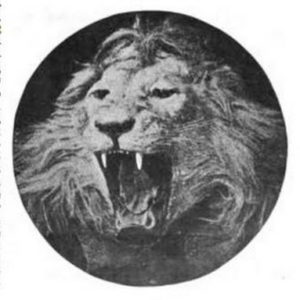
Part 1: Fred Sauter’s Stuffed Menagerie
Lions, and Tigers, and Cats and Dogs, Oh My!
One early spring day in March 1901, several pedestrians in lower Manhattan were startled by a 12-foot Bengal tiger which had emerged from the door of 3 North William Street. No one ever expected to see a tiger on the streets of New York, so you can imagine the surprise when a giant buffalo and mountain lion entered the sidewalk, followed by a gorilla, an elk, and some jaguars and lions.
For several minutes, the animals and the crowd that had gathered remained oddly quiet and still. Then a truck drove up and broke the silence, loading the stuffed menagerie and heading off for the annual Sportsmen’s Exhibit at Madison Square Garden.
The large stuffed animals were the work of New York City taxidermist Frederick Sauter, whose father, also Fred Sauter, had started the business in 1860 at Frankfort Street and Park Row. The senior Fred Sauter had learned the trade in Stuttgart, Germany.
By 1901, 30-year-old Fred Sauter Jr. had taken over the family business and was stuffing all kinds of wild and domestic animals on the ground and second floors of a large 5-story brick building on North William Street.
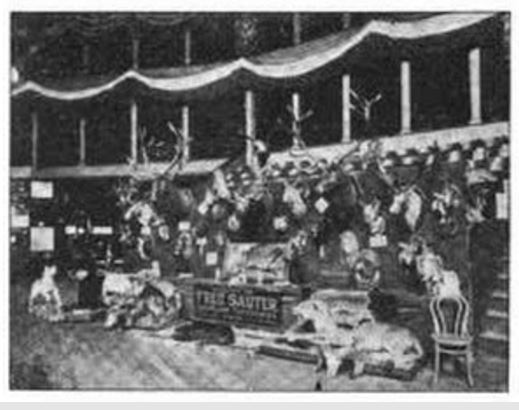
Fred Sauter Moves to 42 Bleecker Street
On October 16, 1901, a fire destroyed the building on North William Street. I don’t know if Fred was able to salvage his business and continue working at that location, but I do know that in 1906 he moved uptown to a large brick building at the southwest corner of Bleecker Street and Mulberry Street.
For the next 40 years, Fred and is son, Fred Sauter 3rd, stuffed every wild animal and domestic pet imaginable in their cavernous workshop at 42 Bleecker Street.
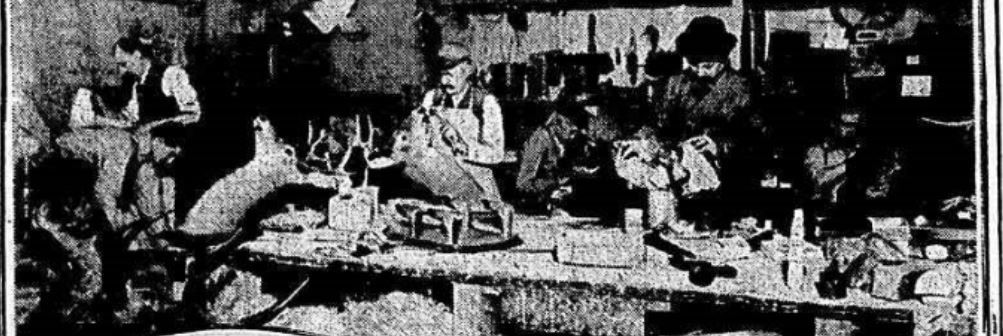
In Part II, I’ll talk about the history and share some photos of the building on Bleecker Street. In the meantime, an article about Fred Sauter’s business in the New York Evening Post in 1924 provides an excellent “visual”:
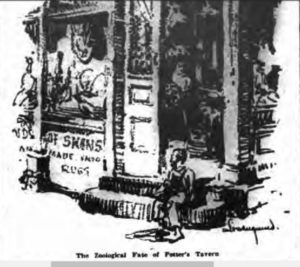
“There is an open doorway at the corner of Bleecker and Lafayette streets that seems to be a signal for most people to beat a hasty retreat. For, just within, strange shapes peer out of the darkness with unfriendly, glassy eyes, and open wide their jagged jaws, ready to devour the universe.
“There are foxes, leopards, and jaguars, with teeth that sparkle white and whiskers that bristle with rage, brown bear cubs, and crouching, grinning monkeys, a screech owl does everything but screech from a far corner, a shaggy-headed buffalo stares blankly from the wall.
“They’re all too realistic, even If you have happened to scan, “Fred Sauter, Taxidermist” on the outside, and noticed the motionless pelicans and squirrel, straining their long necks and cracking nuts (respectively, of course) in the window.
“Then, naturally, the mystery is solved, but an uncanny illusion still persists until you find that some of the animals are all head and nothing else; that the terrific tableau staged by a lion and a zebra in deadly combat is but an African hunt mount, waiting patiently to be rented out to draw the public to a motion-picture thriller; that the owl in the corner with wings that can beat the air is so constructed for crow shooting, and manages to look lifelike, and wisely fool the crows.
“Back in the mounting room there are miracles performed. A shark skin is being stretched over a clay foundation, other shapes are getting padded with excelsior. One worker is carefully sewing the beautiful wing of a bird. An amazing finished product is a fluffy little Pomeranian, with one ear painstakingly cocked at Just the right angle, all set to reside lifelessly on the hearth where once it scampered and barked.”
A High Demand for Stuffed Cats and Dogs
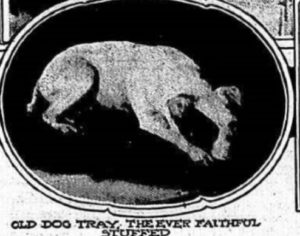
According to old news reports, Fred Sauter probably had the largest still-life wild animal collection in the city outside the Natural History Museum. But wild safari animals for theater sets, exotic animals for large retail store fur departments, and game animals for hunters’ trophy walls were not all that he stuffed for his clientele. Stuffed pet dogs and cats were also in high demand in those days.
According to a feature article about Fred’s business in the New York Evening Telegram on December 24, 1911, some New Yorkers had “little museums” in their homes filled with their stuffed pets. They would have the skin stuffed and then bury the remaining body in private cemeteries.
The dog owners would tell Fred all about their dogs and ask him to pose them with their heads tilted a certain way or their paws facing a specific direction. Fred told the reporter that it was often a traumatic scene when he presented the lifelike, mounted dogs to their owners, especially is the owner was a distraught women.
“At least 5% of [New York City] dogs are preserved in the forms of stuffed mementos by their disconsolate owners after they have finished their earthly careers. The owners of these stuffed dogs take just as much pride in them as they did when they were alive. It was no doubt some comfort to be greeted by a counterfeit Fido in a natural attitude on one’s return home. Some of the stuffed Fidos only need a phonograph attachment with a rough bark record to make them seem startlingly real.”–New York Evening Telegram, December 24, 1911
Stuffed cats were almost as popular as stuffed dogs — if not more so in later years (1930s) when there was a great demand to rent stuffed cats for the film business. In 1911, Fred Sauter said that one of his clients, a woman in Brooklyn, had 13 stuffed cats in her home. She would befriend the stray cats and make them her pets, and then have them stuffed when they died. According to Fred, every Christmas she bought a tree for the cats – the live ones and the stuffed ones.
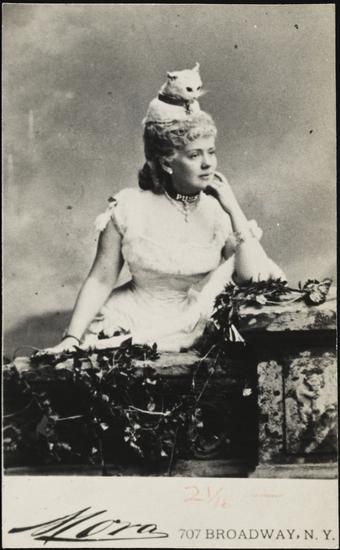
In Part II of this odd stuffed animal tale of Old New York, I’ll share the history of the building at 42 Bleecker Street. All I’ll say now is that this quote from 1905 is attached to the building: “You can’t follow the Lord and chase the devil at the same time.”




Very interesting post. I had no idea it was so popular for people to have their pets stuffed. And that hat…probably going to give me nightmares!
Did fred Sauter 3rd have any children that took over the buisness? If so, what was their name?
According to the NY Times, Sauter and his partner Ed Rowland retired in 1959 and it doesn’t appear that their children carried on the business. Here’s from the Arizona Republic newspaper in 1952: Rowland, whose firm was founded by his father in 1883, has been working at or near the same spot in New York all his adult years. Sauter, third generation of taxidermists in his family, moved uptown to join Rowland some years ago. They used to have 15 employees, now handle the business themselves. They haven’t encouraged any younger members of either family to follow in the tradition, as it’s a dying business. When theirs peters out, they’ll retire, they say.”
That is really fascinating history. Thank you very much.
One more question. Were there any other taxidermists that did big cats around 1970 ish?